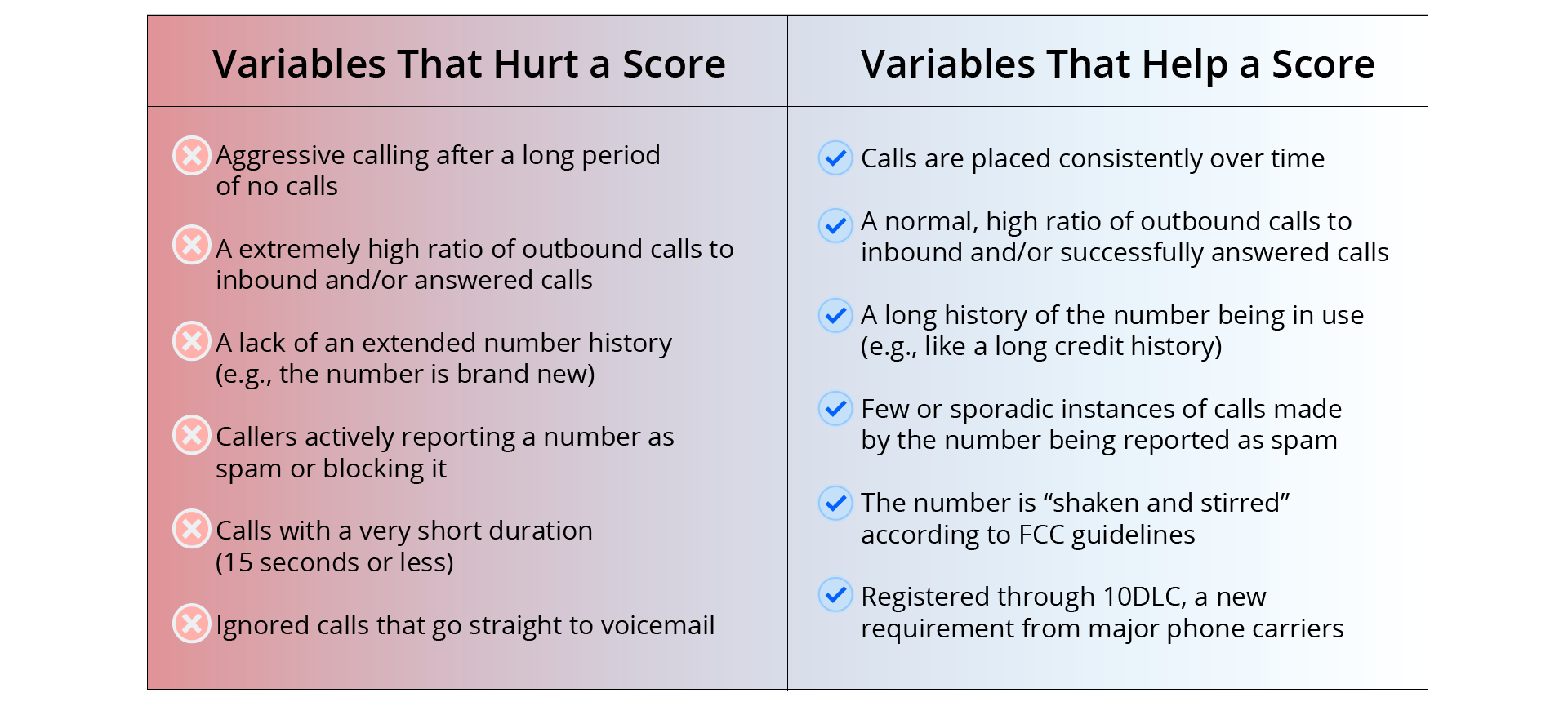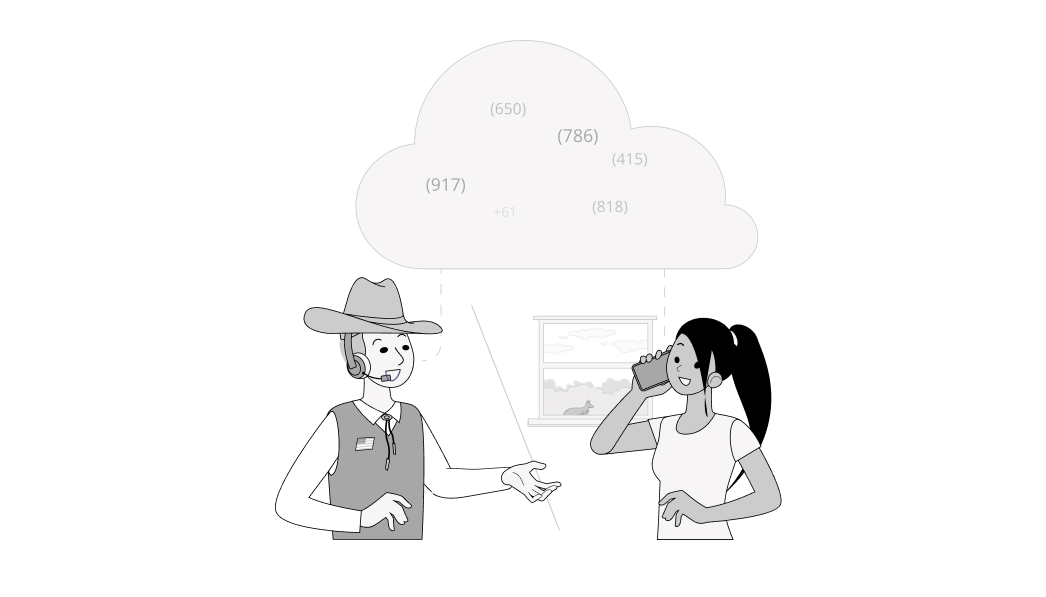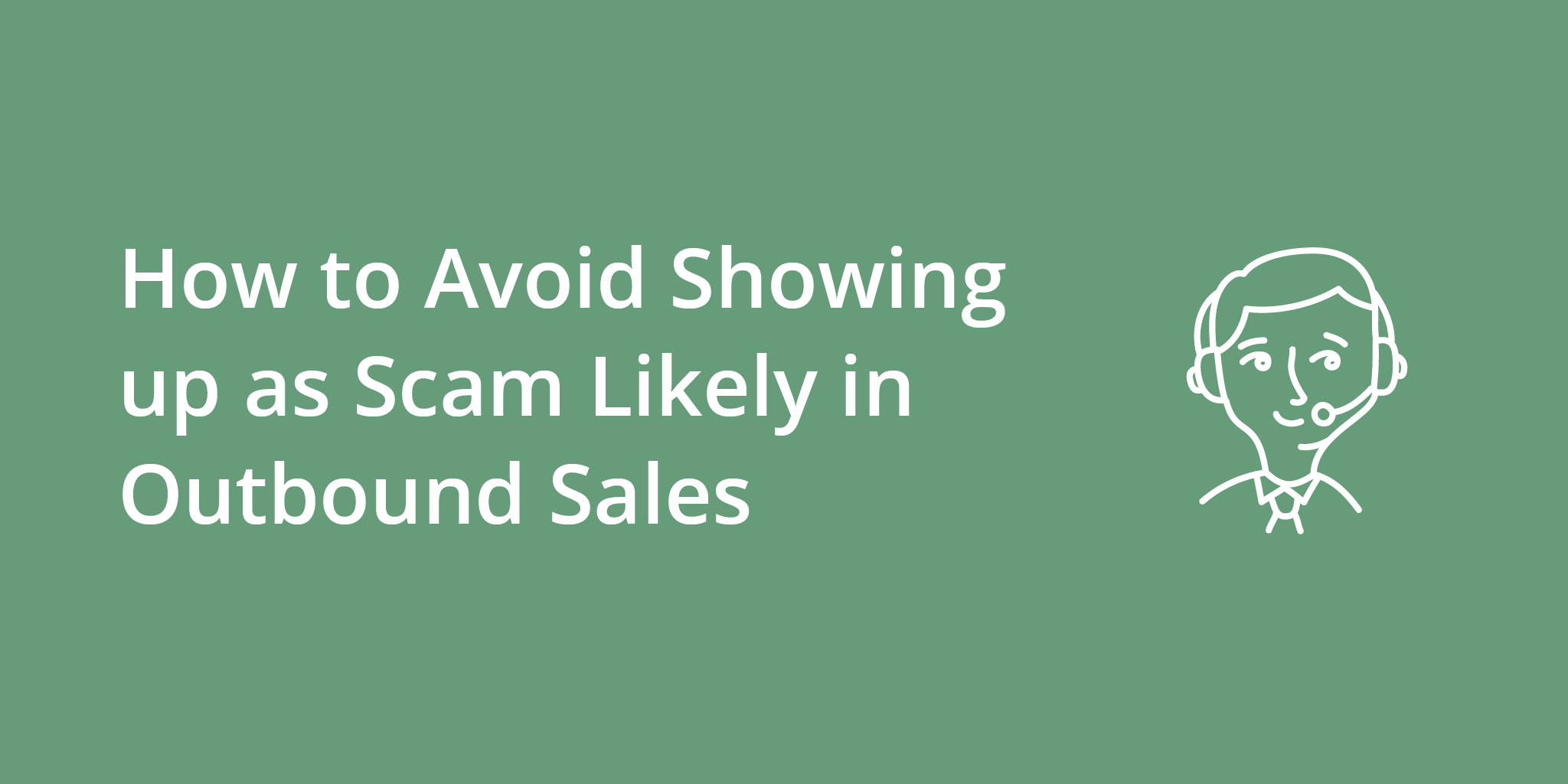A day rarely goes by without a scam likely call showing up on your caller ID. If you’re like most people, you send that call straight to voicemail.
But what if dismissing that call was a mistake? What if you missed out on learning about a product that could drastically improve your team’s morale or help you get that promotion you’ve been yearning for?
Unfortunately, you’ll never know. And that’s one of the major issues for companies today. Although they have compelling, valuable offers, they aren’t even able to reach the prospects who would resonate the most with their message.
Many industries are highly dependent on time-sensitive communications, and getting their number marked as spam has severe consequences for their bottom line. So in this post, we’ll explain why your business phone number may be showing up as spam risk and offer six best practices to avoid showing up as spam in your outbound calls.
Why Does My Business Number Show Up as Scam Likely?
Over the past few years, consumers have grown increasingly upset about spam calls. And in response, the Federal Communications Commission (FCC) passed several laws to alert the public of scam callers via their caller ID.
While this may help in theory, it starkly increases the number of legitimate calls marked as spam. To comply with FCC rules, all major phone carriers have designed their own unique algorithm to screen inbound calls and assign a spam detection score. This score functions very similarly to a credit score in that the more “negative” characteristics your number has, the lower its score, and the more likely it’s marked as spam.
But without knowing what qualities make or break a number for every carrier, it’s challenging for valid businesses to avoid being flagged. That said, some variables almost always hurt a company’s score. They include:
- Aggressive calling after a long period of no calls
- A high ratio of outbound calls to inbound and/or answered calls
- A lack of an extended number history (e.g., the number is brand new)
- Callers actively reporting a number as spam or blocking it
- Calls with a very short duration (15 seconds or less)
- Ignored calls that go straight to voicemail

Although it’s impossible to know the intricacies of each call carrier’s algorithm, decreasing the number of these red flag variables will dramatically reduce the chances of your number being marked as spam and improve your call quality.
6 Ways to Stop Showing Up as Scam Likely on Outbound Calls
Now that you know a few variables that can drop a number’s spam score, let’s discuss six concrete ways to lift it and combat flagging once and for all.
1. Understand the Rules and Regulations
Ultimately, the FCC has the final say and control over the laws that govern spam calls. One of the most well-known guidelines in the Telemarketing Sales Rule (TSR) is that companies cannot call people on the National Do Not Call Registry. But that’s certainly not the only one一FCC’s laws apply on the federal, state, and even local levels, meaning that call centers in different locations may have to abide by different rules. Understanding current legislation and implementing changes to your outbound calling practices is a critical step in avoiding being marked as spam.
2. Establish a Local Presence
Outbound calls seem much more realistic when the number shares the same area code as the recipient. As a result, most carriers’ algorithms interpret this as a positive attribute when calculating their spam scores. So at the very least, instruct your employees to adjust the number they call from to fit whatever region or state they are calling. If you have a set of numbers with local area codes, that’s even better.
3. Register Your Numbers
Registering your numbers is a crucial step to getting your number whitelisted. Agencies like Free Caller Registry and Call Transparency share numbers and their corresponding information with carrier spam monitoring vendors like TNSI, First Orion, and HIYA. Getting each of these partners to mark your numbers as safe greatly diminishes the chances of them getting marked as spam.
4. Cycle Your Numbers
Most business numbers have a high call volume, which immediately puts spam score algorithms on high alert. Rotating the numbers you use throughout the day naturally lowers the number of calls made per hour by a single number. You can do this manually on the backend by assigning your SDRs various numbers to use and reminding them to switch throughout the day, or you could use a sales communication platform like Kixie to manage that process for you.
5. Improve the User Experience
Call recipients are a big risk when it comes to flagging numbers as spam. If customers perceive your employees’ behavior as fraudulent or suspicious, they have the right to report your number to the FCC. To discourage those interpretations, do not call the same customer multiple times a day, hang up on them, or majorly upset them in any way.
Want to grow a stellar outbound team? Check out our 8 Simple Steps to Double Call Center Agent Performance* *blog post.
The better experience a customer has, the more likely they are to answer calls or call you back, and both of those actions add points to your spam score. A good rule of thumb is to start tracking customer behavior patterns so that you call them at points in the day where they are most available and likely to pick up. If you can’t get a hold of someone, leave a detailed voicemail message to let them know exactly why you were calling and how to reach you.
6. Use a Sales-Specific Telecommunications Provider
Keeping track of all these outbound calling do’s and don’ts can be overwhelming without the help of a sales-specific telecommunications provider.
The best vendors will automatically register your number through 10DLC, certifying it as legitimate and preventing anyone from spoofing it. They’ll also pay close attention to any FCC amendments that require changes to your numbers or outbound calling strategy. Some of these providers even have their own proprietary machine learning models that learn which numbers are more likely to show up as spam.
Here at Kixie we provide an AI-powered feature called ConnectionBoost which replaces phone numbers more likely to be marked as spam risk with new local phone numbers that are the least likely to be marked as scam likely. As Kixie identifies spam risk numbers, it removes them from the number pool, further decreasing the chances of our customers’ calls showing up as scam likely.

In fact, ConnectionBoost is so powerful that the trusted number of Kixie calls is over five times higher than those of other VOIP competitors. Because of ConnectionBoost and its other spam-reducing features, Kixie has a better chance of reducing the instances of your calls showing as spam than any other platform on the market.
Stop Showing Up as Scam Likely Today
While many factors contribute to business phone numbers being marked as spam, you can still significantly improve your spam score with due diligence and consistent effort. If you need help developing or enforcing call center practices, don’t hesitate to contact the experts at Kixie to schedule a demo or try our product for free.



